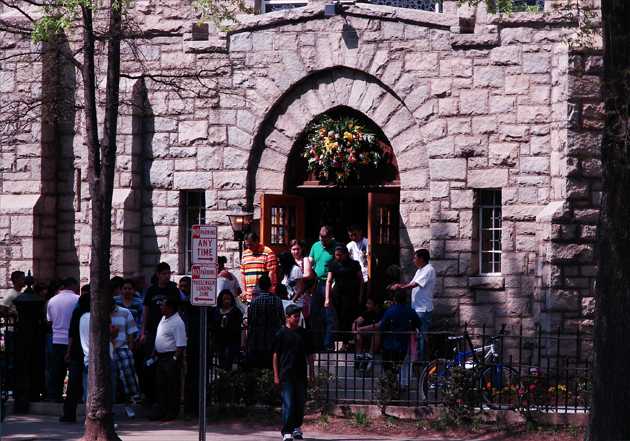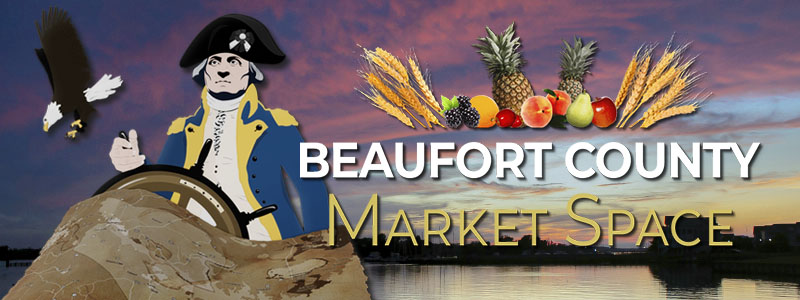Stewards of the Visual Exposition
Sacred Heart Cathedral
Publisher's note: We believe the subject of history makes people (i.e., American people) smarter, so in our quest to educate others, we will provide excerpts from the North Carolina History Project, an online publication of the John Locke Foundation. This one hundred and sixth installment, by Will Schultz, was originally posted in the North Carolina History Project.
Sacred Heart Cathedral is the Mother Church for the Roman Catholic Diocese of Raleigh, making it the spiritual center for Catholics in eastern North Carolina. It is the smallest cathedral in the continental United States. Sacred Heart's parochial school was desegregated in 1953, a year before the Brown v. Board of Education decision.
There was no Catholic church in Raleigh for nearly a century. During the 1860s Catholics worshipped in an old Baptist church on Wilmington Street. They later moved services to the top floor of the Briggs Hardware store. In 1879, Father James White purchased the Pulaski-Cowper mansion, where masses were held in the former ballroom.
These were only temporary solutions, and in 1922 construction began on Sacred Heart Church. The small granite church was completed late in 1924; the first mass in the building was celebrated on October 16. Meanwhile, Vatican officials were searching for a headquarters for the Catholic diocese in North Carolina. Wilmington and Asheville were the leading candidates. But Father Thomas Griffin, pastor of Sacred Heart, argued that the diocese ought to have a central location. The Vatican considered his arguments persuasive. They named Sacred Heart the cathedral for the Raleigh Diocese in December 1924.

A Saturday afternoon wedding at Sacred Heart Cathedral: Above. photo by Stan Deatherage
The Catholic school predated the cathedral. In 1909, Father Thomas Griffin and four nuns founded Sacred Heart Parochial School and Sacred Heart High School. The schools moved into the Pulaski-Cowper mansion after the cathedral was built; in 1936 they moved again, to a new granite building on Hillsborough Street. The Sacred Heart schools became the center of controversy in 1953, when Bishop Vincent S. Waters integrated all Catholic schools and churches in North Carolina. The next year, Sacred Heart High School began accepting black students from St. Monica Grade School. Sports teams from other schools refused to play the integrated Sacred Heart team, so the bishop canceled all sporting events from 1953 until 1955.
Vatican II brought major changes to Sacred Heart. The Vatican II council, a meeting of the Catholic hierarchy held in Rome from 1962 until 1965, "modernized" Catholicism by updating the Church's ancient traditions. After the council was over, Raleigh Catholics renovated Sacred Heart to make it less traditional. The original marble altar and two angel statues were removed, and the elaborate designs on the cathedral floor were covered with plain red tile. The bishop's red oak throne was placed in storage. The priest conducted his service in English, not Latin. A few Catholics in the congregation, however, maintained traditions. For instance, even after the cathedral's kneelers were removed, one elderly woman persisted in kneeling on the cold tile floor.
The cathedral itself changed little from the 1970s to the mid-1990s, but the Catholic Church in North Carolina experienced rapid growth. Between 1988 and 1998, the Raleigh diocese's Catholic population doubled from 65,000 to 148,000. As of 2010, the diocese served more than 215,000 Catholics. Many of these new parishioners were Hispanics. By 2000, more than half the parishes in the Raleigh diocese offered a Spanish Mass.
Sacred Heart made a return to tradition with the advent of the new millennium. In 1998, the cathedral underwent a $500,000 facelift. Many of the renovations reversed the changes made after Vatican II. The red tiles were stripped away to reveal the original floor. The kneelers and the bishop's throne returned. The ceiling was repainted a dark blue and decorated with fourteen-carat gold stars. Even Latin was reintroduced into the worship. Sacred Heart began offering a monthly Latin Mass in 2007, after Bishop Michael Burbidge received dozens of requests to restore the traditional service.
The cathedral's small size is inadequate for Raleigh's growing Catholic community. Sacred Heart can hold only 350 people at one time. Yet the cathedral has nearly 6,000 parishioners. This lack of space has led Bishop Burbidge to propose the construction of a new, larger cathedral. For now, Sacred Heart remains Raleigh's Mother Church.
Sources:
"CGHS History,"
http://www.cghsnc.net/Portals/0/About%20Us/CGHS%20History.pdf (Accessed May 24, 2010); News & Observer, June 8, 1994; September 12, 1995; November 27, 1998; May 1, 2000; January 7, 2008; April 13, 2010; "Raleigh's Sacred Heart Cathedral: Ecclesiastical Grandeur in a Small Package," http://goodnightraleigh.com/2009/03/raleighs-sacred-heart-cathedral-ecclesiastical-grandeur-in-a-small-package/ (Accessed May 24, 2010).
Go Back
Sacred Heart Cathedral is the Mother Church for the Roman Catholic Diocese of Raleigh, making it the spiritual center for Catholics in eastern North Carolina. It is the smallest cathedral in the continental United States. Sacred Heart's parochial school was desegregated in 1953, a year before the Brown v. Board of Education decision.
There was no Catholic church in Raleigh for nearly a century. During the 1860s Catholics worshipped in an old Baptist church on Wilmington Street. They later moved services to the top floor of the Briggs Hardware store. In 1879, Father James White purchased the Pulaski-Cowper mansion, where masses were held in the former ballroom.
These were only temporary solutions, and in 1922 construction began on Sacred Heart Church. The small granite church was completed late in 1924; the first mass in the building was celebrated on October 16. Meanwhile, Vatican officials were searching for a headquarters for the Catholic diocese in North Carolina. Wilmington and Asheville were the leading candidates. But Father Thomas Griffin, pastor of Sacred Heart, argued that the diocese ought to have a central location. The Vatican considered his arguments persuasive. They named Sacred Heart the cathedral for the Raleigh Diocese in December 1924.

The Catholic school predated the cathedral. In 1909, Father Thomas Griffin and four nuns founded Sacred Heart Parochial School and Sacred Heart High School. The schools moved into the Pulaski-Cowper mansion after the cathedral was built; in 1936 they moved again, to a new granite building on Hillsborough Street. The Sacred Heart schools became the center of controversy in 1953, when Bishop Vincent S. Waters integrated all Catholic schools and churches in North Carolina. The next year, Sacred Heart High School began accepting black students from St. Monica Grade School. Sports teams from other schools refused to play the integrated Sacred Heart team, so the bishop canceled all sporting events from 1953 until 1955.
Vatican II brought major changes to Sacred Heart. The Vatican II council, a meeting of the Catholic hierarchy held in Rome from 1962 until 1965, "modernized" Catholicism by updating the Church's ancient traditions. After the council was over, Raleigh Catholics renovated Sacred Heart to make it less traditional. The original marble altar and two angel statues were removed, and the elaborate designs on the cathedral floor were covered with plain red tile. The bishop's red oak throne was placed in storage. The priest conducted his service in English, not Latin. A few Catholics in the congregation, however, maintained traditions. For instance, even after the cathedral's kneelers were removed, one elderly woman persisted in kneeling on the cold tile floor.
The cathedral itself changed little from the 1970s to the mid-1990s, but the Catholic Church in North Carolina experienced rapid growth. Between 1988 and 1998, the Raleigh diocese's Catholic population doubled from 65,000 to 148,000. As of 2010, the diocese served more than 215,000 Catholics. Many of these new parishioners were Hispanics. By 2000, more than half the parishes in the Raleigh diocese offered a Spanish Mass.
Sacred Heart made a return to tradition with the advent of the new millennium. In 1998, the cathedral underwent a $500,000 facelift. Many of the renovations reversed the changes made after Vatican II. The red tiles were stripped away to reveal the original floor. The kneelers and the bishop's throne returned. The ceiling was repainted a dark blue and decorated with fourteen-carat gold stars. Even Latin was reintroduced into the worship. Sacred Heart began offering a monthly Latin Mass in 2007, after Bishop Michael Burbidge received dozens of requests to restore the traditional service.
The cathedral's small size is inadequate for Raleigh's growing Catholic community. Sacred Heart can hold only 350 people at one time. Yet the cathedral has nearly 6,000 parishioners. This lack of space has led Bishop Burbidge to propose the construction of a new, larger cathedral. For now, Sacred Heart remains Raleigh's Mother Church.
Sources:
"CGHS History,"
http://www.cghsnc.net/Portals/0/About%20Us/CGHS%20History.pdf (Accessed May 24, 2010); News & Observer, June 8, 1994; September 12, 1995; November 27, 1998; May 1, 2000; January 7, 2008; April 13, 2010; "Raleigh's Sacred Heart Cathedral: Ecclesiastical Grandeur in a Small Package," http://goodnightraleigh.com/2009/03/raleighs-sacred-heart-cathedral-ecclesiastical-grandeur-in-a-small-package/ (Accessed May 24, 2010).
| Earl Scruggs (1924 - 2012) | NC Past, In the Past, Body & Soul | ECU, Vidant Medical Center provide gift of life via four-person kidney exchange |
Latest Body & Soul
|
The campaign for former President Donald Trump released a statement Saturday afternoon condemning the White House’s declaration of Easter Sunday as “Transgender Day of Visibility.”
Published: Thursday, April 4th, 2024 @ 1:31 pm
By: Daily Wire
|
|
He is risen!
Published: Saturday, March 30th, 2024 @ 8:06 pm
By: Stan Deatherage
|
|
The great misnomer for non Christians that the day Jesus Christ was executed by occupying Romans, celebrated by Christians as "Good" Friday, must be a paradox of ominous proportions.
Published: Saturday, March 30th, 2024 @ 7:52 pm
By: Stan Deatherage
|
|
The North Carolina Department of Health and Human Services is launching a Community Partner Engagement Plan to ensure the voices of North Carolina communities and families continue to be at the center of the department’s work.
Published: Tuesday, March 26th, 2024 @ 2:43 pm
By: Eastern NC NOW Staff
|
|
The North Carolina Department of Health and Human Services will host a live Spanish-language Cafecito and tele-town hall on Tuesday, Feb. 27, from 6 to 7 p.m., to discuss how to support and improve heart health as well as prevent and manage heart disease.
Published: Saturday, March 23rd, 2024 @ 8:56 pm
By: Eastern NC NOW Staff
|
|
Part of ongoing effort to raise awareness and combat rising congenital syphilis cases
Published: Saturday, March 23rd, 2024 @ 6:18 pm
By: Eastern NC NOW Staff
|
|
Recognition affirms ECU Health’s commitment to providing highly-reliable, human-centered care
Published: Wednesday, March 20th, 2024 @ 10:47 pm
By: Eastern NC NOW Staff
|
|
The North Carolina Department of Health and Human Services is launching a new Statewide Peer Warmline on Feb. 20, 2024. The new Peer Warmline will work in tandem with the North Carolina 988 Suicide and Crisis Lifeline by giving callers the option to speak with a Peer Support Specialist.
Published: Wednesday, March 20th, 2024 @ 1:29 am
By: Eastern NC NOW Staff
|
|
A subsidiary of one of the largest health insurance agencies in the U.S. was hit by a cyberattack earlier this week from what it believes is a foreign “nation-state” actor, crippling many pharmacies’ ability to process prescriptions across the country.
Published: Tuesday, March 5th, 2024 @ 1:12 am
By: Daily Wire
|
|
The John Locke Foundation is supporting a New Bern eye surgeon's legal fight against North Carolina's certificate-of-need restrictions on healthcare providers.
Published: Monday, March 4th, 2024 @ 11:08 am
By: Carolina Journal
|
|
Shia LaBeouf received the Sacrament of Confirmation, completing his conversion to Catholicism, on Sunday, and the actor’s confirmation sponsor suggested LaBeouf may become a deacon “in the future.”
Published: Sunday, March 3rd, 2024 @ 2:58 pm
By: Daily Wire
|
|
The North Carolina Department of Health and Human Services today released the following statement on the Trails Carolina investigation:
Published: Sunday, March 3rd, 2024 @ 12:19 pm
By: Eastern NC NOW Staff
|
|
The North Carolina Department of Health and Human Services today released a draft of its 2024-25 Olmstead Plan designed to assist people with disabilities to reside in and experience the full benefit of inclusive communities.
Published: Sunday, March 3rd, 2024 @ 11:36 am
By: Eastern NC NOW Staff
|
























